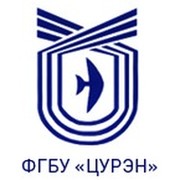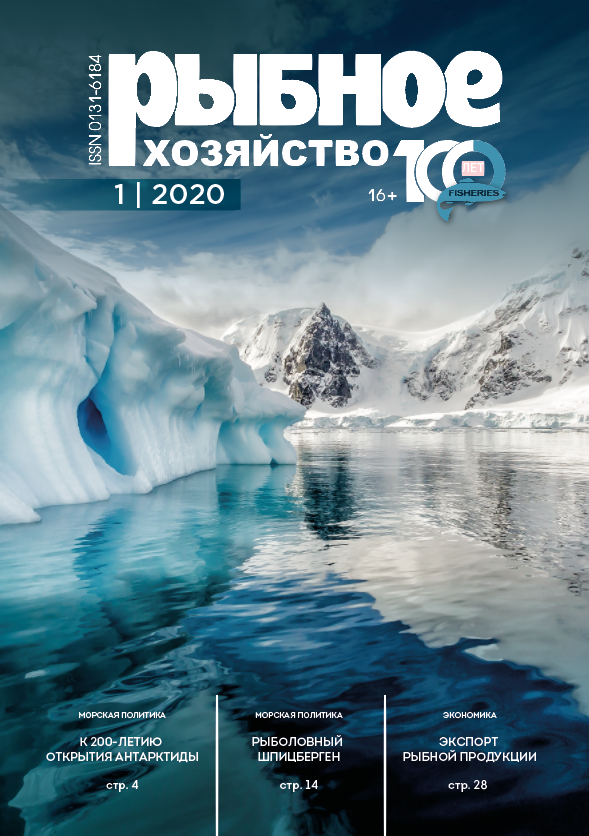VAK Russia 06.04.2001
VAK Russia 08.00.00
The data on Electronic Programmable Complex Fish-protecting facility of electric principle (EP EPRCFF) impact on gonads and gametogenesis of four abundant carp species (Cyprinidae) is given. Based on cytological and histological analysis of gonads from electro-treated fishes, an estimate of fishes’ fertility is made.
electric field, fish-protecting facility, fish gonads, fish gametogenesis
1. Izvekov E.I. Vliyanie elektromagnitnyh poley // Ekologicheskie problemy Verhney Volgi. Yaroslavl': Izd-vo YaGTU, 2001. C. 308-323.
2. Izvekov E.I. Vozdeystvie antropogennyh elektricheskih poley na bioresursy vodoemov: itogi i perspektivy issledovaniy // Sovremennoe sostoyanie bioresursov vnutrennih vodoemov. Materialy dokladov I Vserossiyskoy konferencii s mezhdunarodnym uchastiem. 12-16 sentyabrya 2011 g., Borok, Rossiya. V dvuh tomah. - M.: AKVAROS, 2011. T. 1. C. 267-276.
3. Izvekov E.I., Aslanov G.A. Ekologicheskaya bezopasnost' elektrolova i effektivnost' promysla vo vnutrennih vodoemah // VNIERH. Ser. Aktual'nye nauchno-tehnicheskie problemy otrasli. M., 2000. Vyp. 2. S. 1-68.
4. Mayzelis M.R., Mishelovich G.M. Perspektivy promyshlennogo elektrolova // Rybn. h-vo. 1989. № 8. S. 77-80.
5. Makeeva A.P. Embriologiya ryb. M.: Izd-vo MGU, 1992. 216 s.
6. Mishelovich G.M. Tehniko-biologicheskoe obosnovanie ekologicheski bezopasnyh parametrov elektromagnitnogo polya dlya promysla i zaschity ryb // Problemy ekologicheskoy bezopasnosti promysla ryb na vnutrennih vodoemah. Sb. nauch. trudov FGNU GosNIORH. Spb, 2004. Vyp. 330. S. 43-60.
7. Petrov V.N., Vaschinnikov A.E. Vliyanie elektricheskogo polya na vyzhivaemost' ranney molodi ryb // Tr. kompleks. ekspedicii Saratov. un-ta po izuch. Volgogr. i Saratov. vodohranilisch. Polevye i lab. issled. bespozvonoch. i ryb. Saratov, 1982. S. 131-137.
8. Sinyavichene D., Virbickas Yu. Razvitie polovyh zhelez ryb // Posledeystvie elektricheskih poley na vodnyh zhivotnyh. Vil'nyus, Mokslas, 1977. S. 43-49.
9. Barnes M.E., Lott J.P., Sayler W.A., Cordes R.J. Practical observations on the use of eggs from electroshocked females during spawning of inland fall chinook salmon // North American Journal of Aquaculture. 1999. V. 61. № 2. P. 162-166.
10. Hilgert P.J. Evaluation of a graduated electric field as a fish exclusion device. Final report to Puget Sound Power and Light Co. Environmental Sciences. PO Box 97034. Bellevue, Washington 98009-9734. USA. 1992. 29 p.
11. Marriott R.A. Effects of electric shocking on fertility of mature pink salmon // Progressive Fish-Culturist. 1973. V. 35. P. 191-194.
12. Maxfield G.H., Lander R.L., Liscom K.L. Survival, growth, and fecundity of hatchery-reared rainbow trout after exposure to pulsating direct current // Trans. Amer. Fish. Soc. 1971. V. 100. P. 546-552.
13. Muth R.T., Ruppert J.B. Effects of two electrofishing currents on captive ripe razorback suckers and subsequent egg-hatching success // North American Journal of Fisheries Management. 1996. V. 16. № 2. P. 473-476.
14. Riedel D. Über eine Beeinflussung der Fischgeschlechtsproducte durch den elektrischen Strom unter besonderer Berucksichtigung der Elektrofischerei // Zeitschr. f. Fischer. 1954. Bd. 3. H. 1-3. S. 183-234.
15. Rümmler F., Schreckenbach K., Pfeifer M. Auswirkungen der Elektrofischerei auf fische // Fischer und Teichwirt. 1998. 49. № 3. S. 88-92.
16. Snyder D.E. Electrofishing and its harmful effects on fish. Information and Technology Report USGS/BRD/ITR-2003-0002, U.S. Geological Survey Biological Resources Division. U.S. Government Printing Office, Denver, CO. 2003a. 149 pp.
17. Snyder D.E. Invited overview: conclusions from a review of electrofishing and its harmful effects on fish // Reviews in Fish Biology and Fisheries. 2003b. V. 13. P. 445-453.
18. Stewart C.T., Lutnesky M. Retardation of reproduction in the red shiner due to electroshock // North American Journal of Fisheries Management. 2014. V. 34. № 3. P. 463-470.











